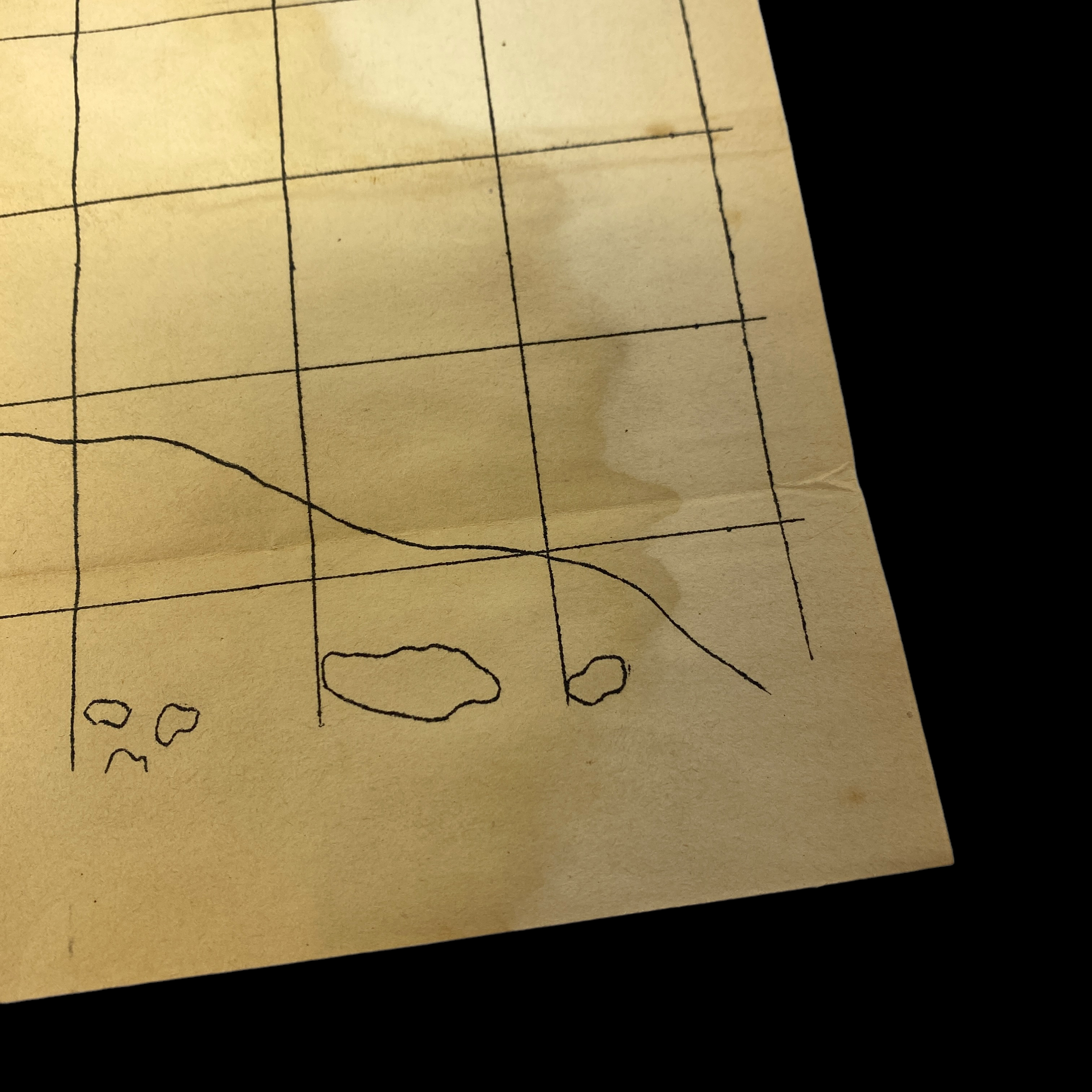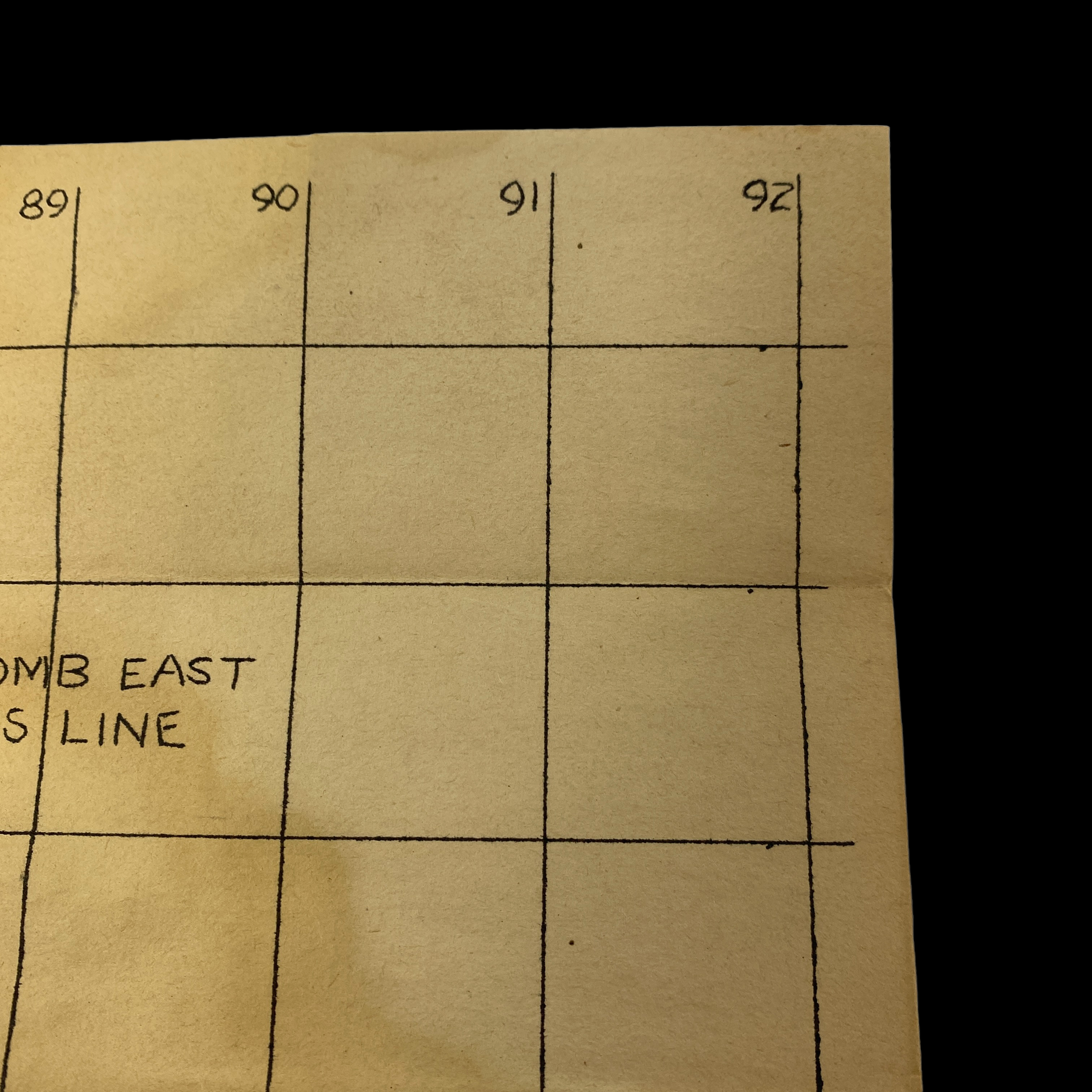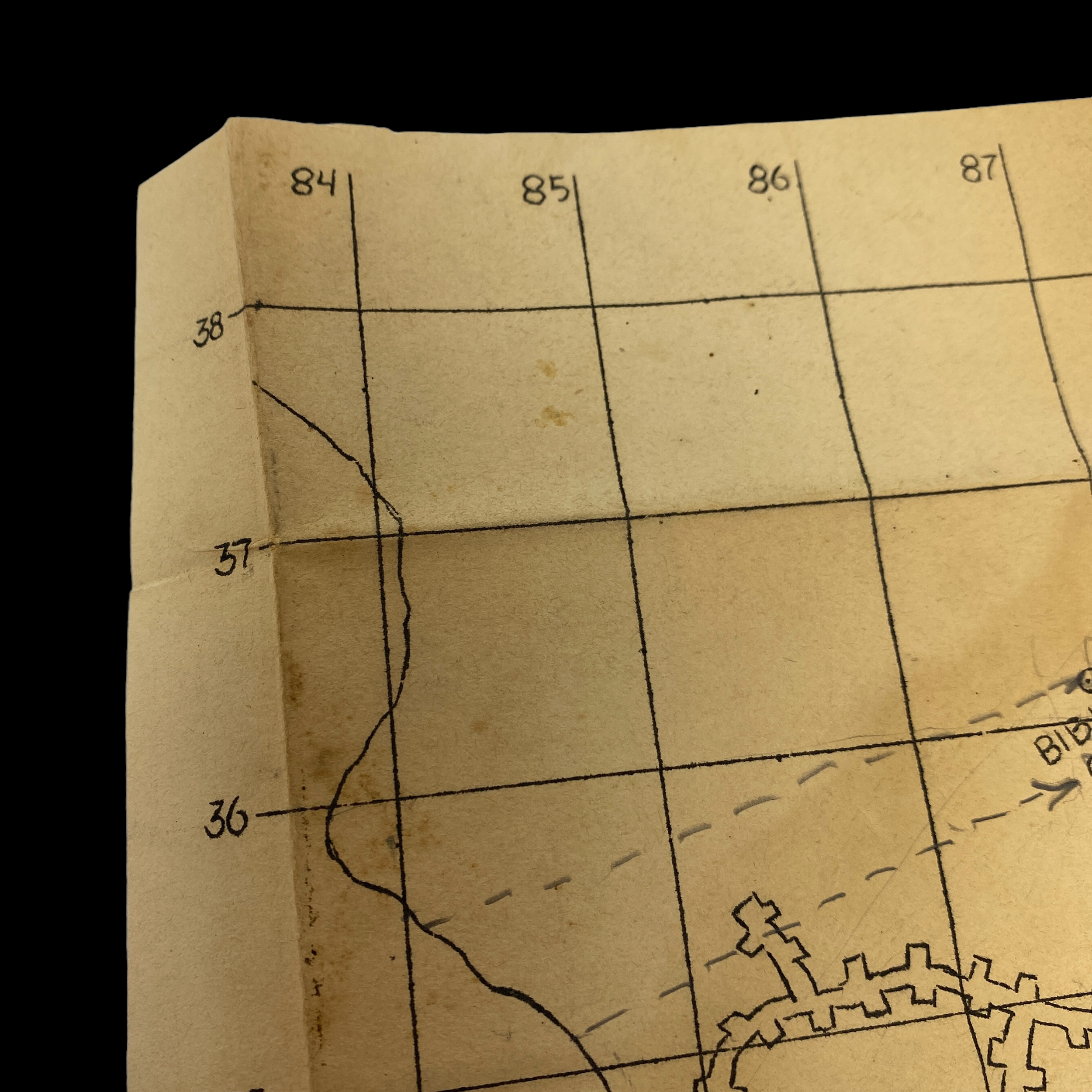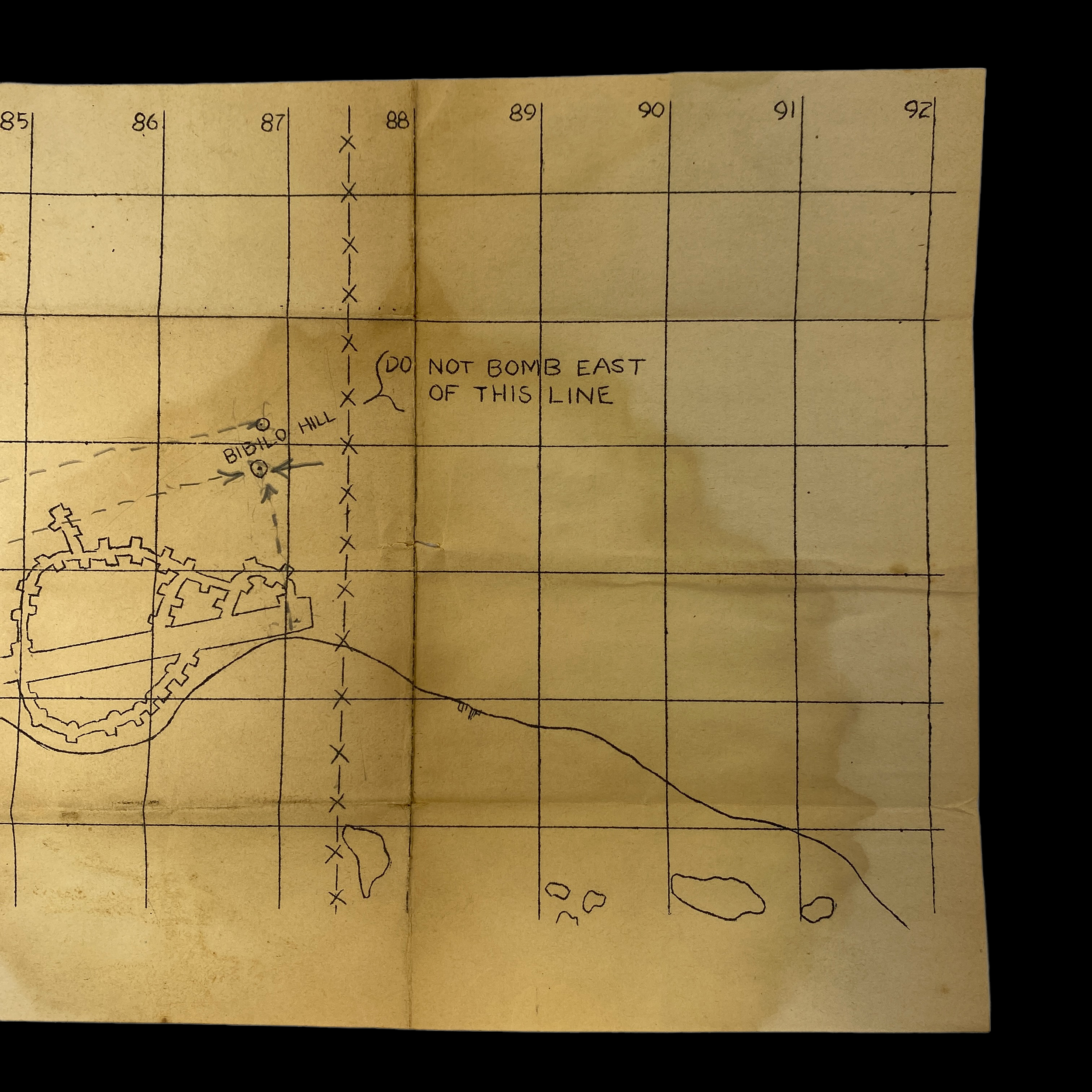RARE! 1943 Operation Cartwheel "Battle of Munda Point" (Bibilo Hill) Combat Annotated Battlefield Artillery Map





















RARE! 1943 Operation Cartwheel "Battle of Munda Point" (Bibilo Hill) Combat Annotated Battlefield Artillery Map
Comes with hand-signed C.O.A.
*The Battle of Munda Point was a significant victory for the United States. It marked the first time that the United States had captured an airfield from the Japanese during World War II.
This incredibly rare and museum-grade WWII 1943 U.S. artillery map was used during Operation Cartwheel on the front lines of the Pacific Theater during the intense and opening stages of the Battle of Munda Point and Bibilo Hill. The New Georgia campaign was a series of land and naval battles of the Pacific campaign of World War II between Allied forces and the Empire of Japan. It was part of Operation Cartwheel, the Allied strategy in the South Pacific to isolate the Japanese base around Rabaul. The campaign took place in the New Georgia group of islands, in the central Solomon Islands and followed the Allied capture of the Russell Islands. The main fighting took place on New Georgia island itself, although significant actions also took place around the island chain throughout the campaign.
This front-line artillery map is marked with extremely rare combat annotations and was used during the intense fighting in July of 1943. These rare front-line maps are extremely scarce, especially ones with battle markings and annotations of the frontline at the time saying “DO NOT BOMB EAST OF THIS LINE”.
The Battle of Munda Point, also known as the Battle of New Georgia, was a significant engagement during World War II that took place in the Pacific Theater. The battle was fought between the United States and Japan in 1943, and it was a crucial turning point in the war.
The United States had been making a steady advance towards Japan's outer defense perimeter in the Pacific. In early 1943, the United States decided to invade the New Georgia group of islands, which was located in the Solomon Islands. The main objective of the operation was to capture the airfield at Munda Point on the island of New Georgia.
The United States had a significant advantage in terms of manpower and equipment. They had a force of over 30,000 troops, as well as a large number of aircraft, tanks, and artillery. On the other hand, the Japanese had a force of around 12,000 troops, and their equipment was outdated.
The battle began on June 30, 1943, when the United States landed on the island of New Georgia. The Japanese were caught off guard and were quickly pushed back. The United States quickly secured the beachheads and began to advance towards Munda Point.
The fighting was intense, and the Japanese put up a strong resistance. The United States encountered a number of obstacles, including dense jungle, steep hills, and swamps. The Japanese also had a number of well-entrenched positions that made it difficult for the United States to advance.
Despite these challenges, the United States was able to push the Japanese back and capture Munda Point on August 5, 1943. The airfield at Munda Point was now in the hands of the United States, which gave them a significant advantage in the air.
The Battle of Munda Point was a significant victory for the United States. It marked the first time that the United States had captured an airfield from the Japanese during World War II. The United States was now in a position to launch bombing raids on the Japanese bases in the Solomon Islands and the Bismarck Archipelago.
The Battle of Munda Point was also a significant defeat for the Japanese. It was a major setback for their defense perimeter in the Pacific and marked the beginning of their decline in the Pacific Theater. The battle also had a significant impact on the morale of the Japanese troops, who were now aware that they were not invincible.
In conclusion, the Battle of Munda Point was a significant engagement during World War II that took place in the Pacific Theater. It was fought between the United States and Japan in 1943, and it was a crucial turning point in the war. The United States was able to capture the airfield at Munda Point, which gave them a significant advantage in the air and marked the beginning of the decline of the Japanese in the Pacific Theater. The battle also had a significant impact on the morale of the Japanese troops, who were now aware that they were not invincible.